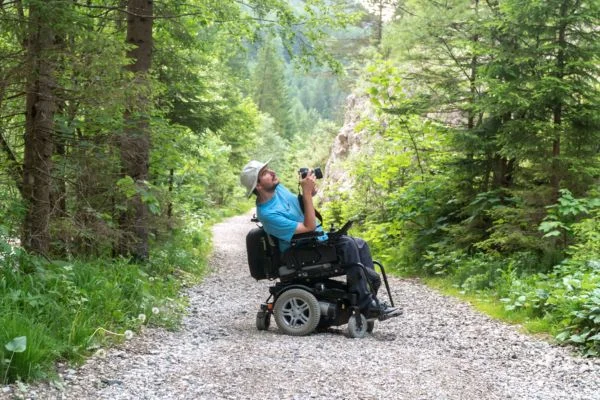Have you ever heard of adaptive hiking? It’s a relatively new concept gaining traction in the outdoor enthusiast community. Adaptive hiking combines regular trail hiking with adaptive equipment and techniques to make it accessible for people with physical limitations or disabilities. This post will explore What Is Adaptive Hiking, why it’s so important, and how you can get involved.
What Is Adaptive Hiking?
Adaptive hiking is a form of recreation that enables individuals with physical disabilities to hike on their own or with assistance from family, friends, or guides.
This involves using adapted tools such as wheelchairs, walkers, trekking poles, and adaptive clothing to make it easier for individuals to navigate trails and participate in activities they may not have been able to do before.
Adaptive hikers also use specialized techniques such as weight shifting and momentum transfers, which help them move more easily over uneven terrain.
Additionally, some organizations offer programs that provide trained volunteers to help with tasks such as setting up camp or helping an individual transfer into their wheelchair.
Also Read: When To Replace Hiking Boots?
Benefits of Adaptive Hiking
Adaptive hiking provides many benefits for individuals looking for a way to enjoy the outdoors without worrying about their condition preventing them from doing so.
It offers an opportunity for physical therapy in a fun and supportive environment, encourages independence, builds self-confidence, and boosts overall mental health.
Additionally, it can help reduce stress levels, provide an outlet for creative expression, and create memories that will last a lifetime.
Types of Adaptive Trails
There are several types of adaptive trails available. Some are designed specifically for wheelchair users, while others are suitable for those with walkers or canes. Some trails are suitable for both non-disabled hikers and those with disabilities.
These trails often include special features such as wheelchair ramps and handrails on steep terrain or wide pathways around obstacles like boulders or tree roots. Whatever your needs, there’s sure to be a trail right for you!
Also Read: Are Combat Boots Good For Hiking?
Why Is Adaptive Hiking Important?

Adaptive hiking provides a wide range of benefits for those who participate in it; from the physical benefits of exercise to the mental benefits of being outdoors in nature. In addition, it allows individuals who may have felt excluded from the outdoors due to their physical limitation(s) to access trails they previously could not have participated in on their own.
Furthermore, it enables those participants to experience nature on their terms without feeling like they are burdening anyone else. Ultimately, adaptive hiking gives people with physical limitations the opportunity to experience outdoor activities independently or with the support of others if needed.
Also Read: How To Choose Hiking Boots?
How Can You Get Involved In Adaptive Hiking?
Suppose you’re interested in participating in adaptive hiking yourself or helping out others who do so. In that case, there are several ways you can get involved: researching local programs/organizations that offer guided hikes or training sessions, joining an online forum dedicated specifically to adaptive hikers, volunteering your time at events hosted by organizations dedicated to making the outdoors accessible for all, or even setting up a group hike for yourself and other like-minded individuals!
Why You Should Try Adaptive Hiking
Adaptive hiking has been around for decades, but it is only recently gained widespread recognition as an essential part of outdoor recreation. For one thing, it allows disabled individuals to access the same enjoyment as non-disabled participants in outdoor activities such as camping or backpacking.
Furthermore, adaptive hiking helps create inclusive environments where all participants feel welcomed and accepted regardless of their physical abilities.
Finally, adaptive hiking can also be beneficial for non-disabled hikers who may need assistance navigating rugged terrain or want to learn more about how they can help create an inclusive environment for everyone who wants to enjoy the outdoors.
Also Read: What To Wear Hiking In Hot Weather?
Conclusion:
Now you know, What Is Adaptive Hiking. Adaptive hiking provides an opportunity for everyone—regardless of ability—to explore the great outdoors independently and safely while creating meaningful connections between those who may otherwise feel disconnected from nature due to physical limitations.
With so many ways to get involved, there’s no better time than now to learn more about adaptive hiking and discover how you can help create a more inclusive environment for everyone enjoying nature!



